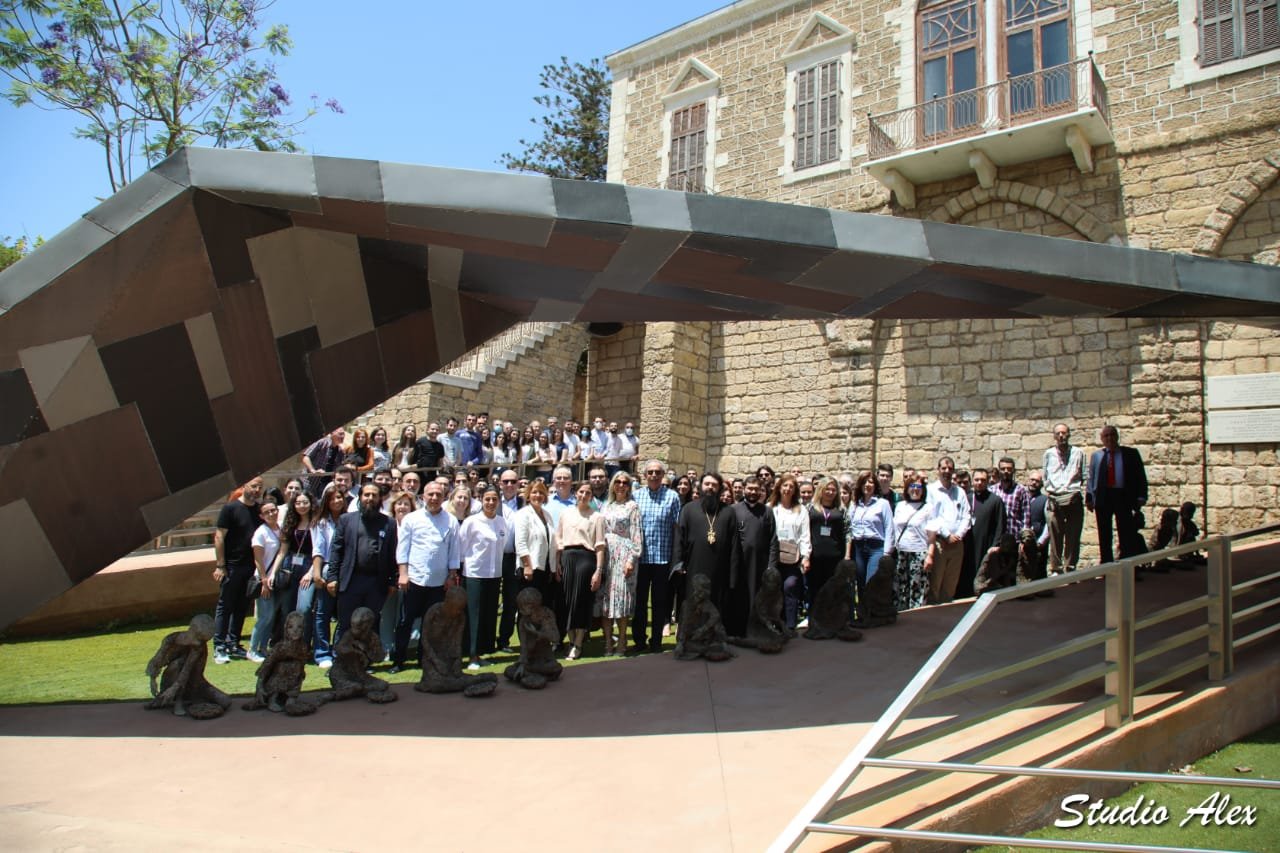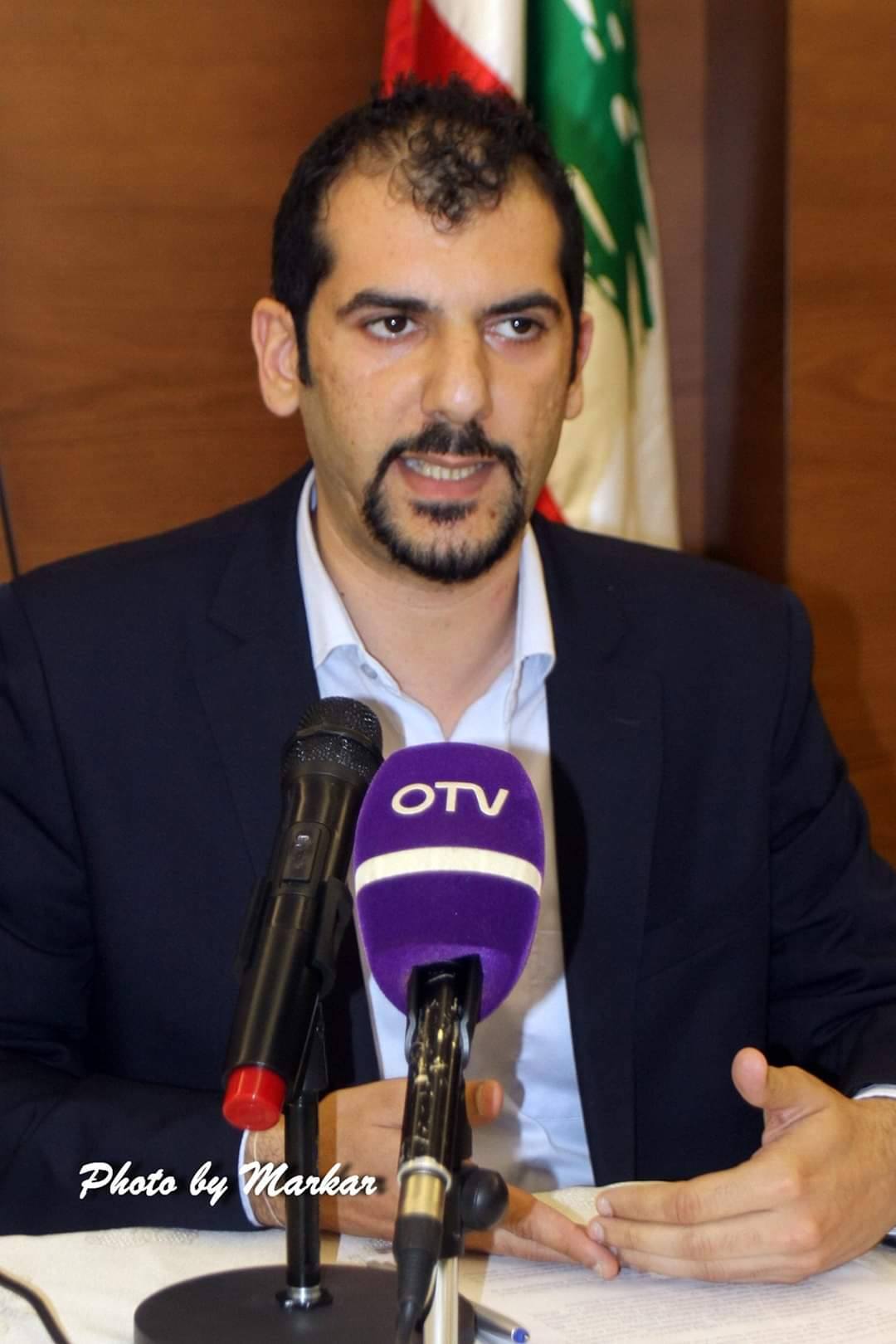
Background
On Saturday, May 21, 2022, the Hamazkayin Armenian Educational and Cultural Society in Lebanon under the patronage of the Catholicosate of Cilicia and with the financial support of the Armenian communities department of the Calouste Gulbenkian Foundation hosted a youth seminar on “Post-Genocide Creative Vision: Memory, Art and Demand for Restitution,” dedicated to the 107th commemoration of the Armenian Genocide. The one-day seminar brought together more than 130 young Lebanese-Armenians at the Bird’s Nest Orphanage in Byblos/Jbeil.
Organizers noted the importance of this timely seminar, that “the feelings of alienation and destruction that resulted from this trauma had to be explained, new traditions had to be built, and new discourses about the ‘self’ and ‘identity’ had to be constructed. Armenians had to rebuild themselves as a nation. The collective experience – the Genocide – became one of the most significant building blocks. However, rebuilding an identity was and still is a struggle amidst global political dynamics, constant immigration waves, and ongoing threats to Armenia’s security and sovereignty that continue shaping the already multifaceted Armenian Diaspora in a more complex manner. This struggle is visible not only at the intellectual level but also through the more direct interactions of Armenians with their heritage and culture.”
For this reason, Hamazkayin’s Lebanese Regional Committee, in preparation for the commemorative programs for the 107th anniversary of the Genocide in 2022, decided to provide a critical and analytical approach to explain the evolution of the post-genocide diasporic Armenian identity and heritage. Just over a dozen speakers from different professional backgrounds were invited from Lebanon, the United States, the Czech Republic, Kuwait and Syria. Participants were representatives from various Armenian youth and student associations, schools and universities.
Opening remarks were made by Hamazkayin’s Lebanese Regional Office. Shaghig Hovsepian-Haroutiunian said that this youth seminar aims to raise awareness of the Lebanese-Armenian youth and encourage their critical thinking. In his welcoming remarks on behalf of the organizing committee, Father Barouyr Shernezian stated that the power of the Diaspora becomes significant when we succeed in organizing, consolidating, valuing and encouraging that power. Hence, the more we succeed in re-evaluating and understanding what we have done and continue to do, the more those values will be a stimulus for us to be strengthened in our unique line of Armenian identity. The opening speech of the event was made by Dr. Ara Sanjian who reflected on the first public Armenian Genocide commemorations, press releases and memorials around the world. The seminar also featured guest lecturer, Lebanese author, composer, poet, producer and orchestra leader Ghady Rahbani. Rahbani spoke in Arabic about the contribution of Armenian artists to the formation of Lebanese cultural identity. He highlighted the names of Lebanese Armenian artists who have contributed to the formation of the contemporary Lebanese cultural identity and the field of art.
The Program
The program was divided into four main topics: “Language and Literature”; “Music”; “Stage and Screen”; and “Diasporic Institutions and Community Life.” Each topic included a panel discussion and a short Q & A session.
“Language and Literature” was presented by lecturers Armen Urneshlian, Arda Jebejian and Anita Moutchoyan. The session was chaired by Christ Kheroian. The session began with a lecture on “Literature and Trauma” by Haigazian University lecturer and principal of the Armenian Evangelical College, Dr. Armen Urneshlian. Dr. Urneshlian briefly touched upon the expressions and ideas of the post-genocide psyche of Armenian writers and poets. He analyzed the expressions of intellectuals such as Tekeyan, Vahian, Oshakan, Tsarukian, Hamastegh and others.
The second lecture was delivered in English by Anita Moutchoyan and titled “A Comparison between First and Third Generation Diasporic Literature: From Assimilation Post-Memorial Documentation and Demand for Justice.” Moutchoyan is a lecturer at Haigazian University and the founding director of the HU Writing Center. Moutchoyan chose William Saroyan from the first generation and Peter Balakian from the third generation. Her talk primarily focused on tracing both first-generation and third-generation diasporic literary works, written in or translated to English, to highlight the role she had argued that post-memorial artistic witnessing plays in the continuous demand for justice for the Armenian cause.
The last presentation of the session was dedicated to the role of Western Armenian in the life of the Armenian community. The presentation “Western Armenian as a Symbol of Survival and Endurance” by Dr. Arda Jebejian, assistant professor at the American University of the Middle East addressed the consequences of deportation, the characteristics of the “victim Diaspora” and the attempts of the Armenians to preserve the Armenian language in their communities.
Lecturers for the “Music” session included Dr. Sylvia Angelique Alajaji, Haig Utidjian and Zakar Keshishian. The moderator of the session was Garen Yosoulkanian.
Dr. Alajaji, who is associate professor and chair of music at Franklin & Marshall College, titled her presentation in English: “Exile on a Cassette. Notes on Music, Memory, and Refusal from the Post-Genocide Armenian Diaspora.” Dr. Alajaji discussed how in the wake of the Armenian Genocide, music opened up broader questions about how to define what it meant to be Armenian. She traced the Armenian musical cultures that emerged over a century from New York to Beirut to California. For Alajaji, these acts of preservation, creation, erasure and recovery all are part of what music means to the Armenian Diaspora.
The second lecturer on the topic was Dr. Utidjian, a conductor and musicologist. He delivered a lecture on “Armenian Sacred Music in the Aftermath of the Genocide,” where he highlighted not only our spiritual and cultural losses during the deportation and post-genocide period, but also the efforts to save the culture thereafter from the experiences of prominent individuals.
Keshishian’s lecture, “Exiled Musical Life: The Experience of Classical and Choir Music,” touched upon the role of music in the life of Diaspora Armenians on a professional and artistic level, showing its contribution not only in terms of preservation of the Armenian identity, but also as a post-genocide experience.
The third session was dedicated to “Stage and Screen.” The lecturers of this session were Movses Hergelian, Vatche Adrouni and Hrach Tokatlian. The session was moderated by Kayane Madzounian.
In his presentation titled “Commemoration through Colors and Shapes,” Dr. Hergelian referred to the Turkish massacres in the pre-genocide period from Ivan Aivazovsky’s experience to the post-genocide period, recalling the role of artists and the names of those whose art, according to Hergelian, could not be analyzed without considering the Genocide. Dr. Hergelian added that those artists sang with deep sorrow and expressed their rebellion and revolt through their deeds.
Adrouni, a lecturer at Haigazian University and the Northern Institute of Armenology and the founder of Shrchun Theater Group and Geghard Theater Center, titled his lecture “The Topic of Genocide on Stage.” He referred to the theatrical censorship created after the Hamidian massacres, when Armenians dominated the so-called “Turkish theater,” as well as the prohibition of Armenian-speaking performances and a number of words, and the unbridled ways of performing plays adopted by the Armenians. According to Adrouni, theater related to the Genocide has been of a political nature.
Tokatlian, a photographer and lecturer at the University of Saint Joseph in Lebanon, titled his presentation “Queries about Films Portraying the Armenian Genocide.” He presented the challenges and approaches adopted in making documentary or feature films related to the Genocide, as well as the digital picture of the works done so far.
The final session was dedicated to “Diasporic Institutions and Community Life.” The lecturers were Levon Sharoyan, Shaghig Kandaharian-Khutaverdian and Hrag Avedanian. The panel was moderated by Krikor Alozian.
Sharoyan, a lecturer at the Hamazkayin Institute of Armenology in Aleppo and a visiting lecturer at the Armenological Institute of the Great House of Cilicia, talked about “Post-Genocide Reflections in Diasporic Printed Media.” He quoted excerpts from his analysis of the Mekhitarists’ Bazmavep and the Azadamart newspaper in Constantinople and linked the publications to certain periods of Armenian history and the Turkish nationalist movement.
In her lecture “Post-Genocide Educational Institutions and the Development of National Identity,” Kandaharian-Khutaverdian, a lecturer at Haigazian University, discussed the role of the Armenian school in language preservation and national identity formation. She concluded that the Armenian school was not only a center of education and training, but also a guarantee of the existence of the Armenian people.
Avedanian, a researcher who is currently enrolled at the Media and Digital Literacy Academy of Beirut, titled his presentation “Constructing a Homeland: The Armenian Experience in Lebanon.” Avedanian presented the vibrant and flourishing cultural movement in post-genocide Lebanon, led by compatriot unions, churches, political parties and schools. Avedanian noted that the Diaspora, being far from the homeland, always kept its eyes on its homeland and, being inspired by it, kept its identity and flourished in a cultural homeland outside its ancestral land.
In order to enhance critical thinking and facilitate debate and discussion on post-Genocide Armenian identity, the seminar included a free discussion space called “Cultural Homeland” aiming to clarify and crystallize the series of lectures and encourage the young participants to provide a reflection and their perspective of post-Genocide Armenian identity. The facilitator of this discussion was Armen Abdalian, a political scientist and political commentator at Radio Voice of Van.
Later, the audience visited the Armenian Genocide Orphans Aram Bezikian Museum for a performance by the Hamazkayin’s Kousan Choir male ensemble led by Krikor Alozian.
At the end of the seminar, the organizers, speakers and participants had a friendly gathering where they exchanged ideas and opinions.
Reflection
Experts representing a broad spectrum of artistic and literary disciplines discussed the creative response to the Armenian Genocide as a way of processing the pain and trauma experienced by survivors and their descendants throughout the past century.
The Lebanese-Armenian youth learned that literature, paintings, music, plays and films not only act as catalysts for communication, but are also evidence of the long-lasting trauma affecting the psychological well-being of more than three generations of Diasporan Armenians. Decades of artistic work, cultural expression and inspiration have helped shape contemporary Armenian identity and create a saturated and sometimes stringent understanding of what it means to be Armenian, often bringing a prescribed set of perspectives to bear.
Such events are important to help the youth and students to explore how collective memory became one of the most crucial factors for identity formation in the Diaspora.



Be the first to comment